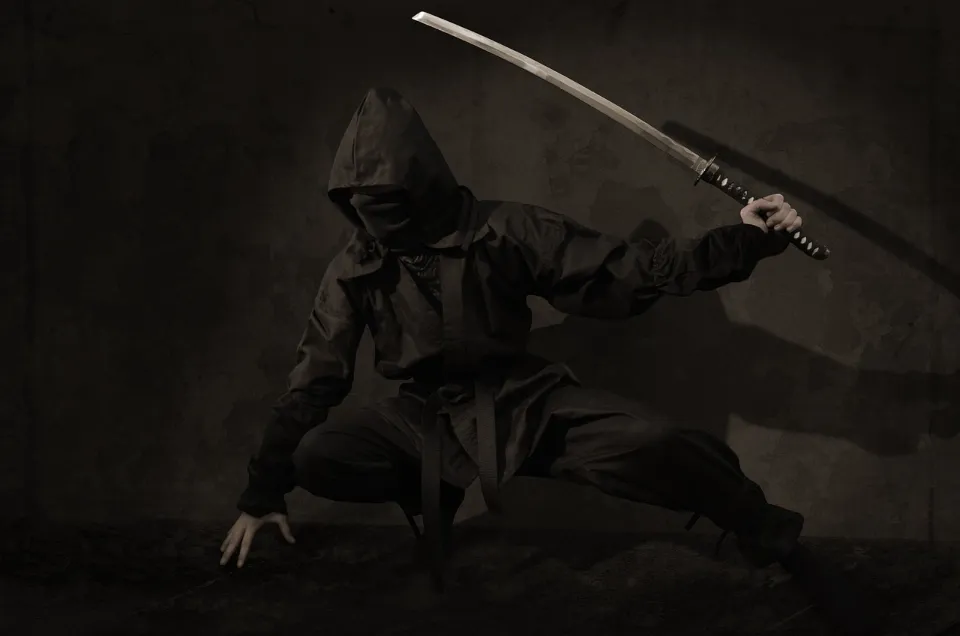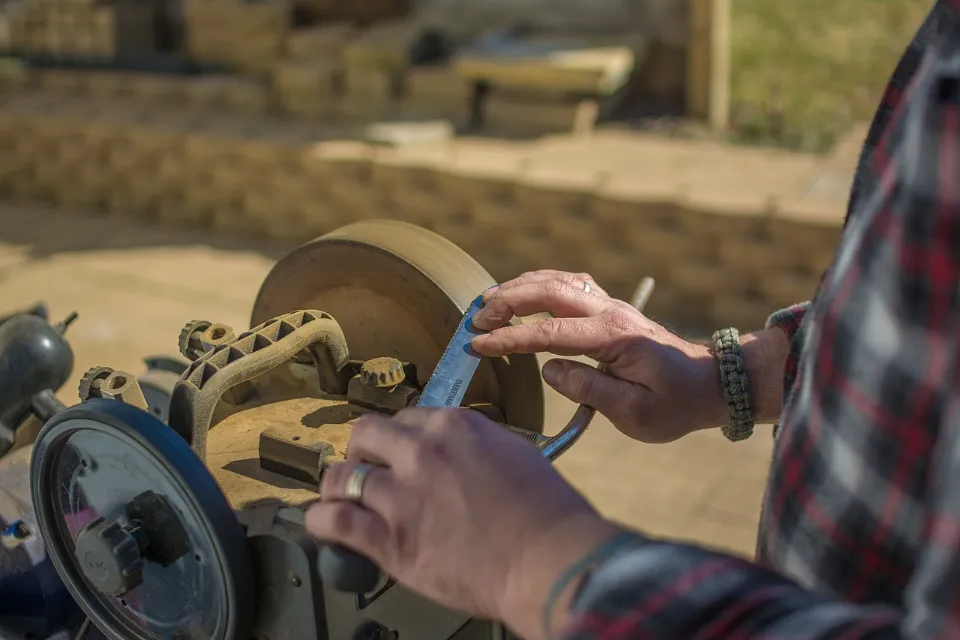
How to Sharpen a Sword With Least Effort?
Knowing how to properly sharpen your sword is an essential skill for any sword enthusiast or collector in case you receive one that isn’t as sharp as you’d like or has lost its edge due to constant use. This article will examine the three primary techniques for sharpening a sword.

Table of Contents
Should You Sharpen Your Sword?
It is crucial to think about and reflect on why you are sharpening your sword. Does it really require it? I strongly advise against sharpening your sword if you only use it for practice or for fun because I know firsthand how easily a small error can result in serious tissue damage over the long term. Unconsciously, one of my friends reached out to grab a brand-new sword that he dropped. The sword had fallen to the ground hilt-first before he even realized what had happened, and when he reached out to pick it up, the point impaled his arm. He still has a scar after all these years, and touching it still hurts. This might have been much more serious. What if he had stooped down to grab it?
Please consider the risks before sharpening a sword. I don’t want to be patronizing; after all, you’re an adult who is responsible for everything you do.
It’s also important to be aware that it is possible to make a sword that is too sharp for actual use. Any cutting sword, including katanas, doesn’t have to be extremely sharp. During combat, a sword that has been overly sharpened will typically cause less harm to an adversary and will more likely chip and glance off bone. A properly sharpened sword, however, will cut off a limb in the same situation.
The best way to determine whether a sword is sharp enough is to cut with it while employing the proper techniques.
It’s a good idea to use some water and a small piece of steel-grade abrasive paper to toughen up the edge of your newly acquired sword. On one side of the blade, very carefully run the piece of paper at a 30-degree angle. Small burs and notches are eliminated by doing this, which is frequently enough to get the blade back to the desired sharpness.
Basic Do’s and Don’ts of Sword Sharpening
- DON’T attempt to sharpen swords that are antiques leave that to the experts, otherwise you will almost certainly destroy their value.
- DON’T use normal power tools to sharpen swords unless you ACTUALLY understand what you’re doing. It’s extremely risky, to begin with. Second, the friction can heat up the blade, ruining the heat treatment and temper, and it’s all too simple to lose the geometry of the sword.
- DO be very careful and patient when sharpening swords. When maintaining a sword, accidents happen more frequently than at any other time, so focus entirely on what you’re doing and avoid outside distractions.
- DO get some practice on a cheap stainless steel wall hanger before attempting to sharpen a more valuable sword. If something is going to end up messed up, it’s better to use a machete or a stainless steel wall hanger (just don’t use it to try and cut stuff with). You will likely ruin the geometry of the first few blades you try to sharpen.
What You Will Need to Sharpen Your Sword?
1) A sword
2) A metal file
3) A whetstone
4) Oil for the whetstone
5) 3M 400 Grit Emery paper
6) Some paper (to wipe stuff with)
7) And a block of wood

How to Sharpen a Sword?
Stage One
Lay your sword on the table and use a block of wood or something similar to support it so that you are comfortable and have plenty of light.
Shape the edge with your file using even, measured strokes at a 30 degree angle by counting strokes one at a time down the length of the blade in one direction, then flipping it over and repeating the process on the other side.
Make sure not to take too much from one side as you continue to file and flip the blade until a rough edge begins to show. Don’t be alarmed by how rough it appears now; in the following two stages, you will refine the sword’s appearance.
Stage Two
Now take out your trusted whetstone and coat the surface with a thin layer of oil.
What you are doing here is polishing, not grinding. As a result, move the blade slowly and uniformly over the stone while maintaining the same 30 degree angle.
The motion you should be using is just back and forth – NOT rubbing a polish in a circular motion. Again, be sure to inspect the blade frequently and ensure that each side has received the same amount of polishing, but don’t worry about how the blade feels just yet. Just make sure the blade’s entire surface has been worked while maintaining the surface geometry.
To see where you have missed, you must have a strong light source. Keeping this in mind, you are not sharpening the edge. Up until the edge is exposed, you are removing metal.
Stage Three
Purchase some 400 grit sandpaper from 3M (avoid the less expensive brands; they aren’t worth it!) to finish the sword sharpening process and blend your newly sharpened blade with the rest of your sword.) and tear off a postage stamp sized piece (see left).
Wet with a little water, and VERY CAREFULLY run the paper along one side of the edge of the blade with your finger at a 30 degree angle.
I can’t emphasize enough how hazardous this is to your fingers; one slip could result in an extremely nasty cut. So make sure you turn off the TV and focus ALL your attention solely on what you are doing when you sharpen swords or YOU WILL SUIT UP FOR A CUT! (In addition, paying close attention to this process is actually quite soothing and relaxing – in a slightly unsettling way…!)
Finally, you might decide to optionally rub the blade with some water and vinegar to brown the surface of the blade and lessen the visibility of the sharpening.
Any sword can be deburred and have its edge touched up with stage three if it has begun to get a little dull from frequent use.

Conclusion
So you now possess the ability to sharpen a sword. To make it fit you, you can sharpen it however you like!
FAQs
What Makes Japanese Swords So Sharp?
Two varieties of tamahagane are used in the construction of katanas: high-carbon, which is very hard and allows for the creation of an extremely sharp edge, and low-carbon, which is very tough and promotes shock absorption. A sword made solely of one type of steel or the other would quickly corrode or become too brittle.
What Happens If You Sharpen a Sword Too Much?
What might happen if swords are oversharpened? The blade gets weaker when the edges are regularly sharpened. Despite the fact that it’s unlikely a modern user would use his sword in battle, over-sharpening the edges causes the sword’s metal to be lost. The sword is made weaker as a result.
What Can I Use Instead of a Whetstone?
To sharpen your blade if you don’t have a proper whetstone, try using an emery board or a coffee mug.
Can You Sharpen a Blade Forever?
Honing your knife won’t get it to cut well over time. The burr’s tiny teeth have lost too many of their pieces. It’s time to make a new burr by removing the old one with an abrasive substance. You can’t accomplish this with your honing steel.


